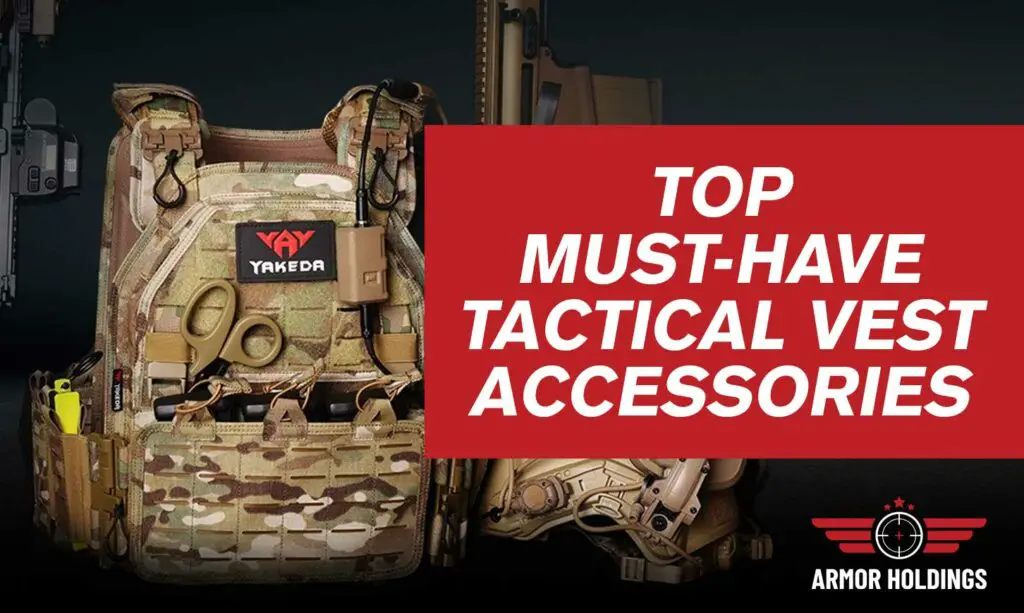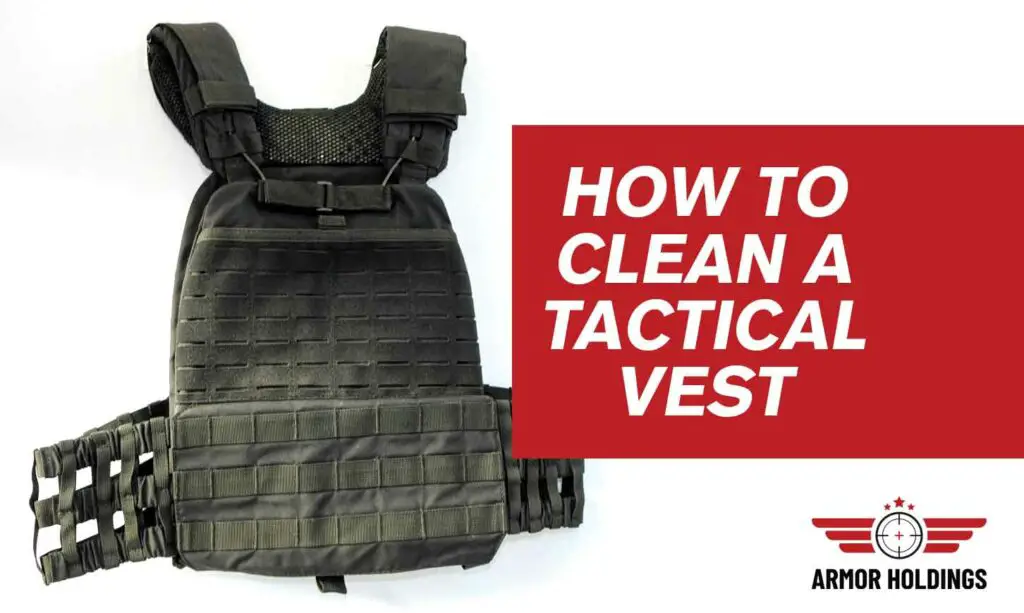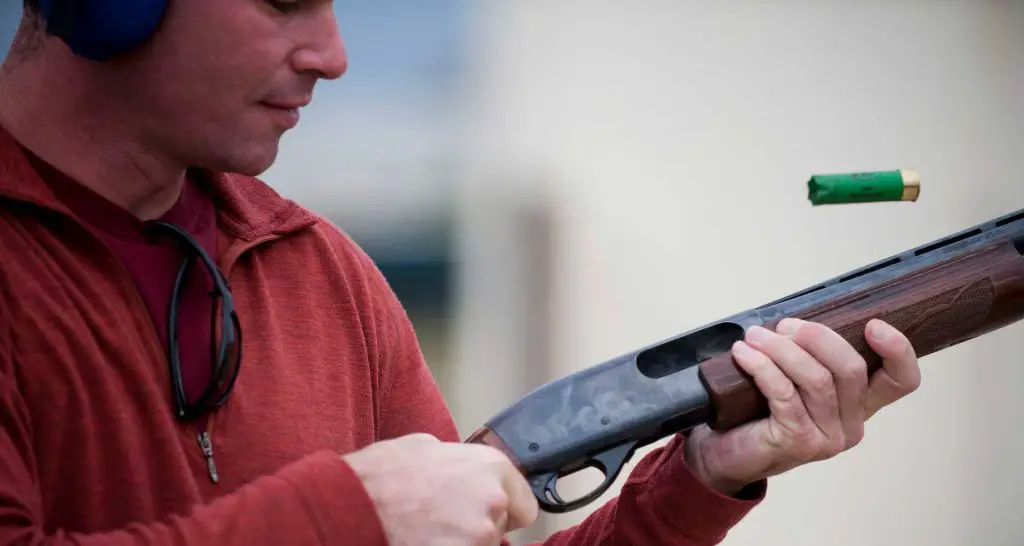
Buckshot For Home Defense
Buckshot is exactly what you think it is: shotgun ammunition designed to hunt bucks.
These pellet-style shots are used in hunting, but because they’re not as lethal as a standard slug, they’re preferred by home defense enthusiasts because they possess a better spread and higher likelihood to hit your target without killing them (if you know what you’re doing).
Buckshot for home defense can be a complete game-changer, so let’s take a look at everything you need to know about it before you make a purchase.
The ammunition you choose is important, and here’s why.
What Is Buckshot?
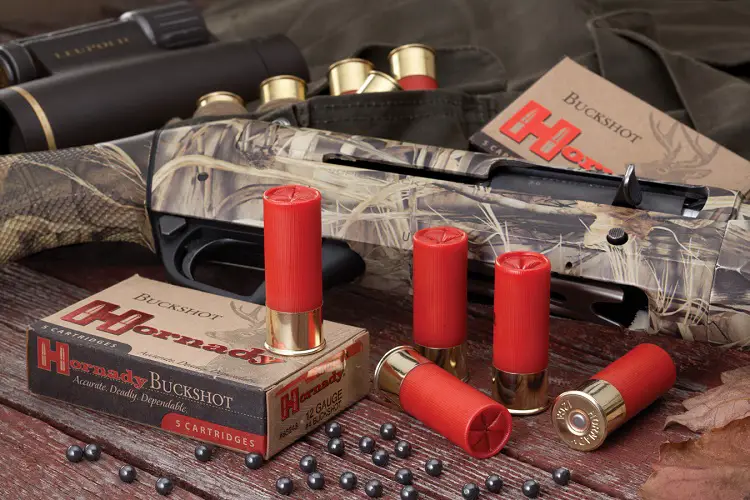
Buckshot is a shotgun shell loaded with pellets instead of slugs.
If you don’t know the difference, slugs are full shells (single bullets), while pellets are small and fill up a shotgun shell casing; there are typically half-a-dozen or more shots in pellet shells.
In the instance of buckshot, there are usually around nine or ten pellets in more 12GA rounds. Buckshot is also commonly used with 12-gauge shotguns, and rarely 20-gauge.
When you fire buckshot round, multiple pellets will spread out. The further away you are from a target, the most spread you’ll have on your shot.
This is what makes it ideal for home defense, among other reasons.
Buckshot is designed to kill bucks, as we know because the pellets are still lethal if you’re close enough while having the potential to stay intact.
It’s much easier to find and remove a pellet from game meat than a shattered shotgun slug, making it easier for cleanup for hunters.
Why Is It Good For Home Defense?
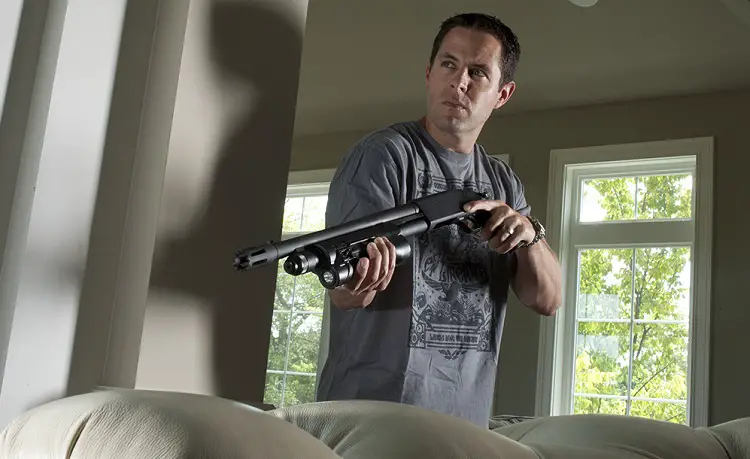
We’re not hunting, so why is buckshot so good for home defense? If you’re looking this up, then we doubt you’ve only looked at one resource on the matter.
You’ll find that buckshot is the common home defense choice, and it’s for a handful of good reasons:
Disable, Not Kill
While a home intruder is going to be fairly close to you and that can ramp up the lethality of buckshot as opposed to firing at a longer range, buckshot can be used to disable an assailant or intruder without killing them.
This is important because, while you know your rights, the state you live in may still try you despite acting in self-defense.
This shows that when you planned your home defense, you did not have any intent to kill, but rather to defend.
Good for Nervous Shooters
You don’t have to be a beginner to be nervous with a gun. You could be experienced, but the thought of aiming a gun at another person pulls your nerves apart and gives you the jitters.
That can happen to anyone. That being said, you still have to act. If your aim isn’t on-point, then you still have a chance to hit and disable your target without needing nerves of steel or the best aim at the firing range.
Less Home Damage (Kind of)
Pellets are still dangerous, potentially lethal depending on the circumstances, and they’re still going to tear up your walls.
However, a slug can tear through a wooden support beam, while buckshot is highly highly unlikely to do so, even if you hit all your pellets on the beam.
These are also common in 12-gauge shotguns and not 20-gauge, so since you’re tuning down the gauge, you’re producing less power, therefore less damage.
We said “kind of” because at the end of the day, you’re still shooting a shotgun indoors and it’s still going to leave damage.
There are too many variables to be definitive on this, but suffice to say, on average you’re going to do less damage with pellets than you will with slugs.
How Does It Compare To Slugs And Birdshot?
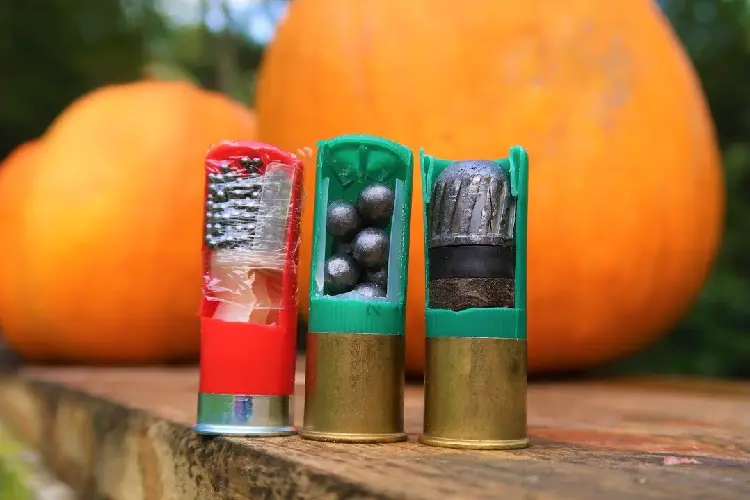
To understand how they compare, we first need to understand how they are different. Slugs, birdshot, and buckshot all have vastly different purposes.
- Slugs: Slugs are large, metal and/or lead bullets designed specifically for shotguns. These wide and large projectiles are designated for self-defense, hunting large game, and target practice. These large projectiles are completely different from the pellets that exist in the other types of ammunition we’re discussing.
- Birdshot: Birdshot utilizes lots of small pellets. Because it’s difficult to be precise when shooting a bird out of the air, these small pellets widen the spread and allow hunting dogs to collect dead or injured prey. Birdshot may include dozens or even hundreds of tiny metal/lead pellets. These do not do as much damage to property or a human as slugs and buckshot do. Birdshot is not advised to be used for self-defense.
- Buckshot: Buckshot will project small but still sizeable pellets in a tight spread to inflict damage in more than one area, typically on large game such as buck (hence the name). It is advisable to be used for self-defense over slugs.
So how do they compare to one another? It all depends on the intended use.
If you absolutely had to use birdshot for self-defense because you have no other options, it can still be used, but it’s not going to be anywhere near as effective.
Having the right ammunition for the specific task at hand is important, so if you’re planning ahead for self-defense (as we all should be), buckshot is the optimal choice.
Are Buckshot Good For Beginners?
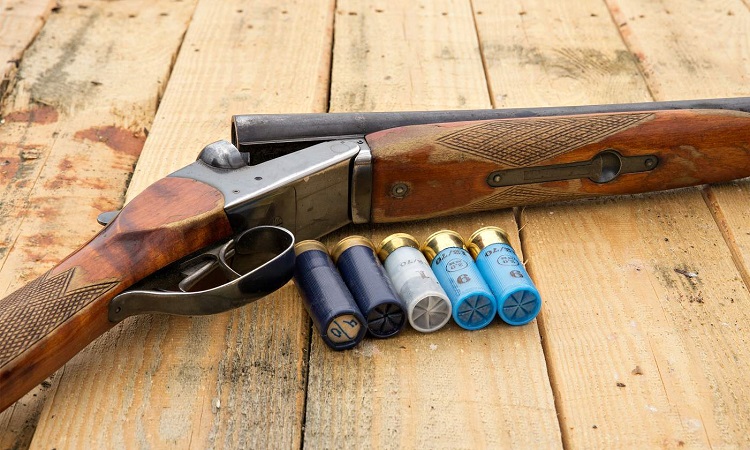
Yes, buckshot is the best type of shotgun ammunition for beginners.
We just explained the difference between buckshot, birdshot, and slugs, and the main takeaway from all of that should be that buckshot can be used by new gun users as well as seasoned professionals.
The construction of shotgun shells seems super simple, but there are a few specificities that play into it all.
For example, buckshot is good for beginners because self-defense-specific shells, for boh protection against animals and other humans, can be star-crimped.
What does that mean?
Star crimp means that pellets will spread out more than they will with other shell construction types and that you can fit more in the barrel of your shotgun.
Other crimp types, such as roll crimp shells, are a bit bulkier on the end and may result in having one less shot in your shotgun.
You don’t know how many invaders there are, so it’s best to have as many shots as possible without going full Rambo.
What Are The Different Buckshot Sizes?
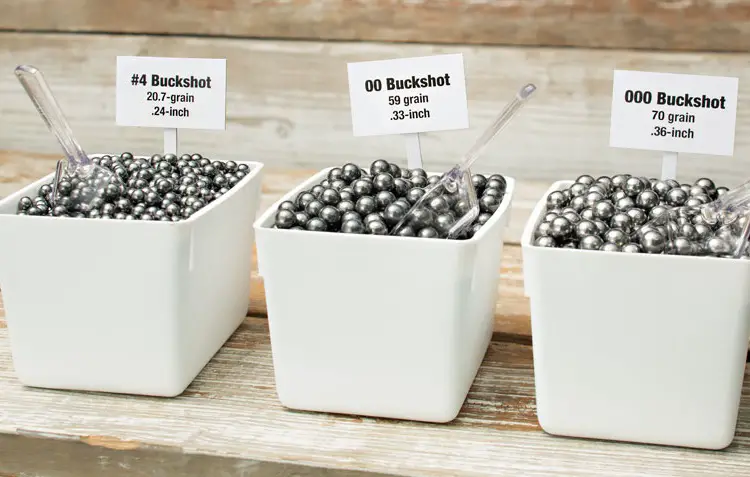
Buckshot comes in seven different main sizes, although weapons and ammunition manufacturers may make their own proprietary ammo when the time calls for it.
However, we highly doubt you’ll be using the largest gauge for any reason, but it’s still good to know what your options are.
- #4: In order of smallest pellet size to largest pell size, we start with #4 and go backward. This small pellet borders on being birdshot, but it’s used in 12-gauge shotguns and rifles with overall low power output. These are fairly common.
- #3: Larger than #4, you’ll run into a lot of #3 sized pellets for buckshot. There isn’t much of a size difference, but depending on what you’re hunting and the distance that you are from your target, this can make a difference.
- #2: There’s a good size difference here. You may run into these for larger game, further distances, and self-defense.
- #1: These pellets are, on average, about twice the size of #4 pellets. This is when you start exponentially seeing differences in the weight and size of buckshot pellets. This does heavy damage and is enough to take down a fully grown buck if you place your shots correctly.
- #0: Now we’re getting into the big pellets. These #0 shots are fairly large, so you’re getting into the territory of taking down moose and seriously large game. Usable for self-defense, but overkill in every situation.
- #00: Double zero is actually a thing, and even then, it’s still not the largest buckshot out there. Because of the power required by a shotgun to propel #00 pellets out, this has serious kickback in every situation. You’re not likely to use #00 for home defense or self-defense in any way.
- #000: Triple zero buckshot is the largest pellet you’ll find in an ammo store. These pellets are large, cause serious damage, and have immense kickback. Not advisable to use outside of hunting extremely large game (1,000 lbs and larger).
Keeping Your Home Safe, No Matter What
Buckshot has its place in home defense as long as you understand what your rights are, and what lethal rounds you hold in your hands.
With a home invasion, you’re close enough for buckshot to kill intruders, so keep your wits about you, and know your rights.
Thankfully, being aimed at with a 12-gauge is normally enough to make any intruder stop in their tracks.
Being prepared is never a bad thing. Now that you know the difference between slugs, birdshot, and buckshot, you can make the best decision possible for your home defense.
Resources:
